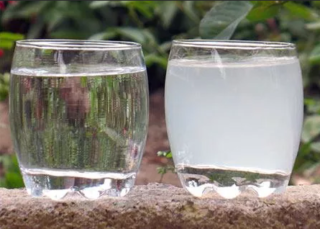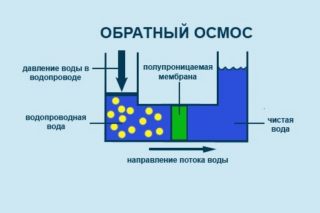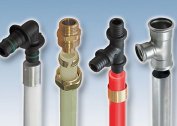Water from a tap, well, spring or well contains many impurities, including lime. They are composed of calcium salts and make water harder. To rid the liquid of lime inclusions, it is advisable and effective to use specialized filters.
Purpose of filters for water purification from lime

It is possible to deal with impurities and soften drinking water without the use of special devices. For example, by boiling, freezing or settling for several days. In this case, the volume of purified and softened liquid will be very limited.
A filter device is a device for the mechanical or ionic treatment of hard water. An anti-lime filter for water supply is usually installed in an apartment on a pipe or devices with an accumulative tank are purchased for use in a country house or in rural areas. Filters allow you to quickly achieve softness and purification of any volume of liquid from many salts and metals. The lime filter eliminates excess calcium and magnesium salts.
Types of filters, principle of operation and device
 Commercially available filters are classified by the method of water treatment:
Commercially available filters are classified by the method of water treatment:
- mechanical restoration:
- processing by electromagnetic waves;
- ultrafiltration;
- reverse osmosis treatment;
- ion exchange plants.
The mechanical processing method involves the use of bulk materials in the filters (sand, gravel, zeolite) or activated carbon. Good filtration is ensured by the soft-porous structure of coal from coconut shells and hardwood. Such an adsorbent is able to retain small particles of lime, as well as eliminate other impurities. Quartz sand and zeolite also effectively cleans due to its granular structure.
Electromagnetic filtering installations are used against lime scale on any surfaces, including internal and hard to reach. Such purifiers are used in central heating and water supply systems as components of a water treatment system or as independent devices. As a result, the surface tension and capillarity of water decreases (less detergent is required). Water can also be treated with a simple magnetic installation. It does not require electricity, but can only be used for cold water, so it is rarely used.
 During ultrafiltration, water with dissolved impurities and other inclusions passes through one or more membranes with cells measuring 0.01-0.1 micrometers. As a result, the membrane traps lime and particles of a different origin.
During ultrafiltration, water with dissolved impurities and other inclusions passes through one or more membranes with cells measuring 0.01-0.1 micrometers. As a result, the membrane traps lime and particles of a different origin.
Anti-lime treatment using reverse osmosis is performed approximately on the same principle. The difference lies in the homogeneity of the reverse osmosis membrane: it is able to remove particles polluting the running water at the ionic and molecular levels. However, not all fluid flows through the membrane. Part of it forms a concentrated solution, drained into the sewer.
Installations that implement ion exchange according to the principle H–OH, output almost desalted water and irreplaceable pH. Most of the cations in water are replaced by hydrogen ions, and the anions by hydroxide ions.
Criterias of choice
Each type of filtering device has advantages and disadvantages.Filters for water purification from lime are selected based on the following criteria:
- price;
- dimensions;
- cost and frequency of consumables;
- installation option: discrete or built-in;
- water treatment efficiency.
It is difficult to make a choice based on one criterion. For example, the advantage of mechanical processing devices is the relatively low price and high-quality water treatment. Minus - the need for periodic refilling, washing or replacing granular particles (sand). In the case of using a device with activated carbon as an adsorbent, it is necessary to take into account its abrasion with time and periodic replacement. Ion-exchange systems are usually a little cheaper than reverse osmosis systems, but for their regeneration it is constantly necessary to acquire strong alkalis and acids.
Electromagnetic cleaners cope well with scale on appliances and sediment in pipes of main water supply and equipment. However, it is recommended that they be additionally installed with them under the sink or have a separate household filter for drinking water.
Installation Features
Activated carbon filters can be in the form of a jug, mounted on a tap as a nozzle, or in a water supply system directly in front of the taps. Bulk machining devices can also be built-in or discrete.
Usually, household filters are connected under the sink to a pipe going to a cold faucet. A hole for a faucet with drinking water is made in or near the sink. The assembled unit is located in the cabinet under the sink, where all the details will be hidden. Each set of filters includes a special insert in the pipeline.
Installation of any water purification devices for domestic use can be performed both vertically and horizontally. The position of the filter does not matter. The main rule is free access to the water purifier.
Operation and maintenance
The location of the filters to get rid of lime impurities is chosen so that the structure is convenient to maintain. There is an option using flexible hoses, with the ability to extend outward. To replace cartridges or cartridges at each cleaning step, ensure that flasks can be loosened and unscrewed freely. Suitable lengths for flexible metal-braided hoses are selected. They should not be too short or long. If the connection does not fit, an adapter must be installed.
Direct sunlight is not recommended. Do not exceed the specified operating life of a particular unit or its consumables. This can do more harm than untreated water.



